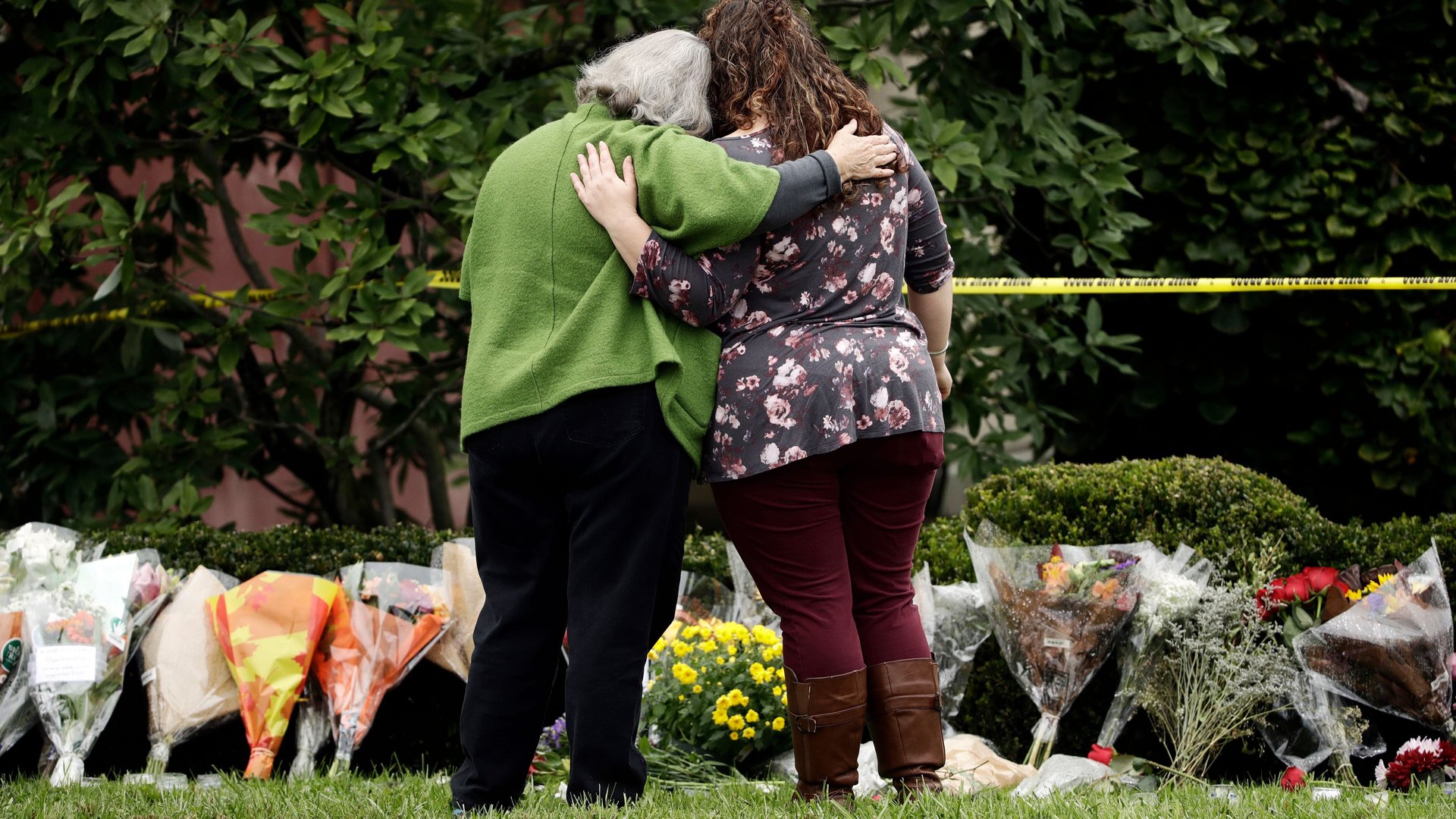How to help the victims of the Pittsburgh synagogue shooting
As details emerge about the horrific shooting at Pittsburgh’s Tree of Life synagogue, Americans are looking for concrete actions they can take to help those who were directly impacted by the event.


As details emerge about the horrific shooting at Pittsburgh’s Tree of Life synagogue, Americans are looking for concrete actions they can take to help those who were directly impacted by the event.
Here are some ideas:
Donate funds
You can donate directly to the Tree of Life Synagogue in Pittsburgh through its website, using a credit card or debit card, or to a number of crowdfunding projects that have been launched, including this verified GoFundMe effort. The money raised will go towards physical repairs to the building and to the survivors and victims’ families.
Two Muslim-American education and activism groups have also organized a fund for the Tree of Life community, to “send a powerful message of compassion through action,” as the groups state on the fund’s website, which also cites a teaching of the Quran: “Repel evil by that which is better”(41:34).” In six hours, this fund reached its goal of $25,000 and is now aiming to raise $75,000.
Finally, you might consider donating to a group like HIAS, which the shooter had specifically named in social-media posts. HIAS was created more than 100 years ago as the Hebrew Immigrant Aid Society, an organization that brought Jewish refugees to the US. For the past decade, it has been assisting refugees of all faiths around the world.
Donate blood
If you live in the Pittsburgh area, you can join the lines today to give blood at a Vitalant location. The non-profit blood bank posted an update on its Facebook page yesterday, asking people to donate throughout the week, while also reminding readers that hospitals everywhere are always in need of donations. “Your donation always helps save lives!” it said.
Learn about anti-Semitism and how to combat it
As Jonathan Weisman, author of (((Semitism))): Being Jewish in America in the Age of Trump has noted, anti-Semitism has not been a live issue in the US for decades, so Americans have been caught unprepared for its sudden rise in recent years, especially since the election of US President Donald Trump.
“The Trump era is about taking out the guardrails and letting people express opinions freely that used to be completely unacceptable,” he told Noah Berlatsky of Pacific Standard magazine.
Unfortunately, increased anti-Semitic attacks and expressions are not limited to the US, but have been reported around the world.
Among Weisman’s suggestions for responding to today’s anti-Semitism, he calls for Jews to align themselves with other marginalized people to push back against hate globally, and to elevate projects like Crash Override, which advocates for and supports targets of bigotry, racism, sexism, and other forms of hatred on social media.
Groups like the Anti-Defamation League (ADL), the Jewish World Congress, and others provide resources for reporting anti-semitic attacks and for understanding sometimes coded language meant to express bigotry and/or to incite violence against Jewish communities.
Generally, advocates for combatting anti-Semitism recommend first understanding its long history, including lessons from Europe and beyond. It’s also important to dispel the widespread notion that anti-Semitism is a problem of the past. The resources above are only starting places on what may be a steep learning curve for many.